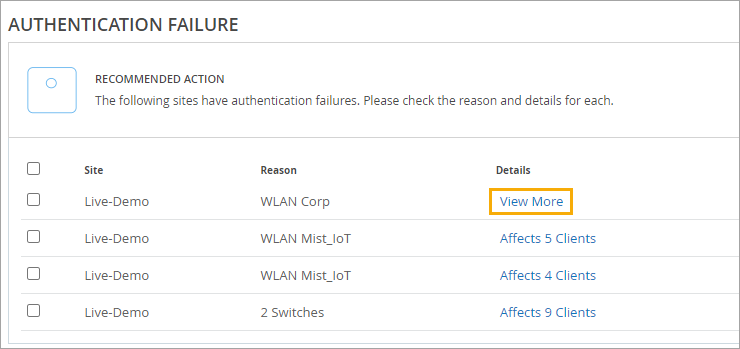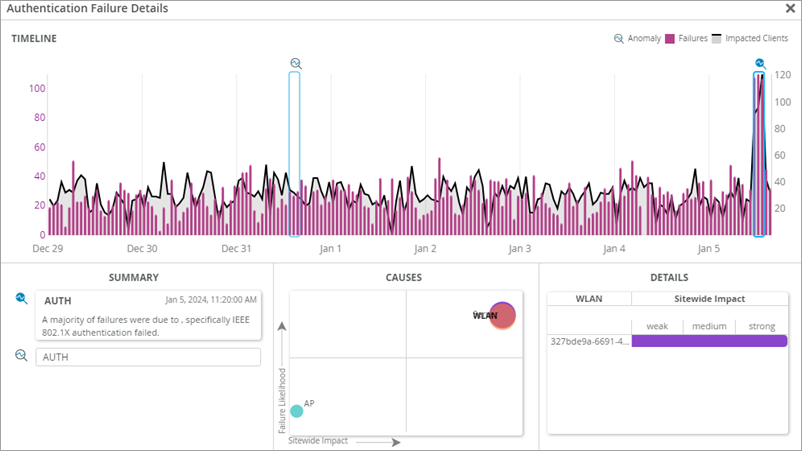- play_arrow Get Started with AI Ops
- play_arrow Insights
- play_arrow Service-Level Expectations (SLE)
- play_arrow Wireless SLEs Dashboard
- play_arrow Wired SLEs Dashboard
- play_arrow WAN SLEs Dashboard
- play_arrow Alerts
- play_arrow Get Started with Marvis
- play_arrow Marvis Minis
- play_arrow Conversations and Queries
- play_arrow Marvis Client
- play_arrow Marvis App for Teams
- play_arrow Troubleshooting Examples
Anomaly Detection Event Card
Use the Anomaly Detection Event Card for additional information about issues and actions.
The Anomaly Detection Event Card provides a more detailed diagnosis about the anomalies for some of the actions that Marvis suggests. The Event Card is available for these types of failures:
Authentication Failures
Domain Name System (DNS) Failures
Dynamic Host Control Protocol (DHCP) Failures
Watch this video to see an example.
Video 1: Marvis Can Detect Switch Traffic Anomalies
If an event card is available, you'll see a View More link, as shown in this example.

When you click View More, the card appears in a pop-up window. Here's a sample event card for an authentication failure.

The event card includes these sections:
Timeline—The number of failure events at each point in time. Marvis highlights the anomalies with a magnifying glass icon. Click the icon to select an anomaly and view the details.
Summary—A description of each anomaly and the most likely cause. It also indicates if the clients mostly failed on a certain radio band, access point (AP), or wireless LAN (WLAN). You can select different anomalies by clicking their titles.
Causes—A graphical representation of the relative impact of the AP, WLAN, and radio band. The size of the circle indicates the correlation to failure, and the positions on the graph show the Failure Likelihood and the sitewide impact. You can click a device to display the information in the Details section.
Details—A list of the impacted devices. The details change when you click a device type in the Causes graph. For example, click the AP icon in the graph to see the details for the APs.




















